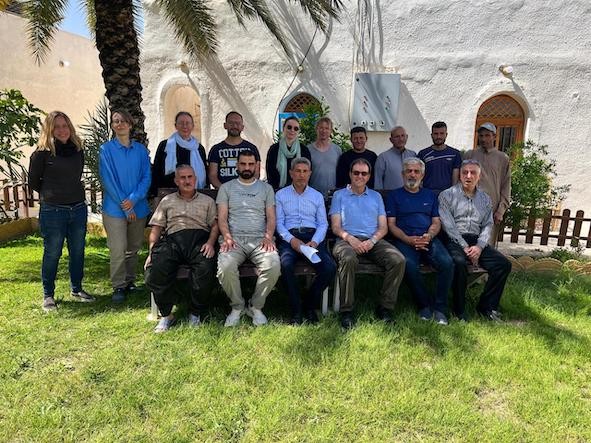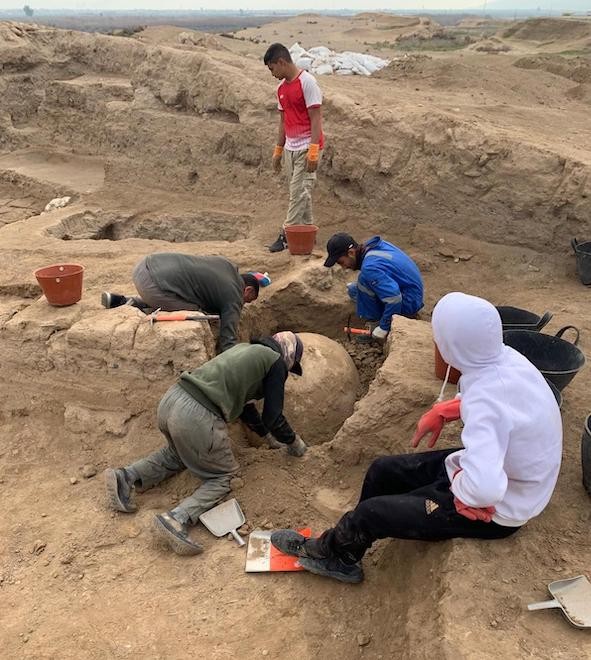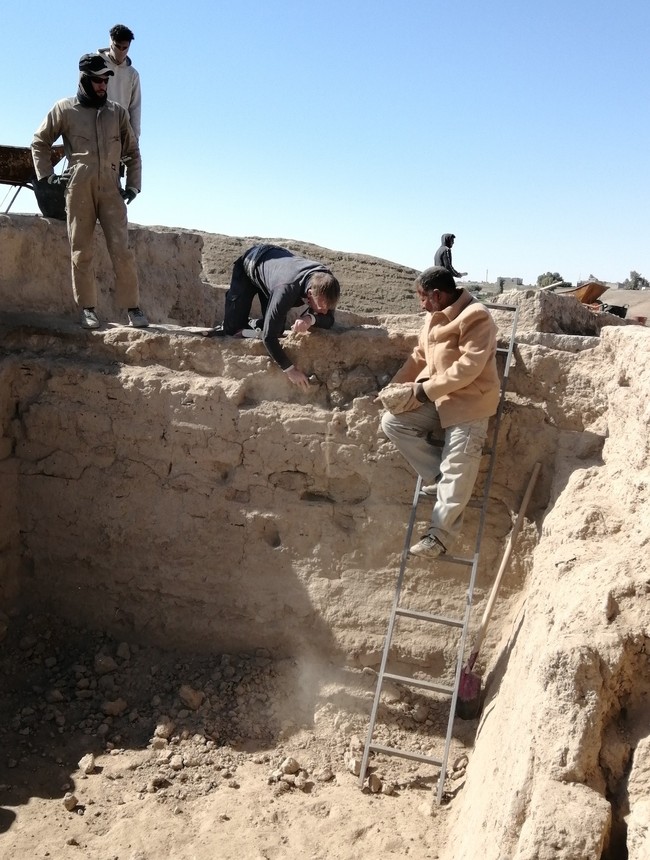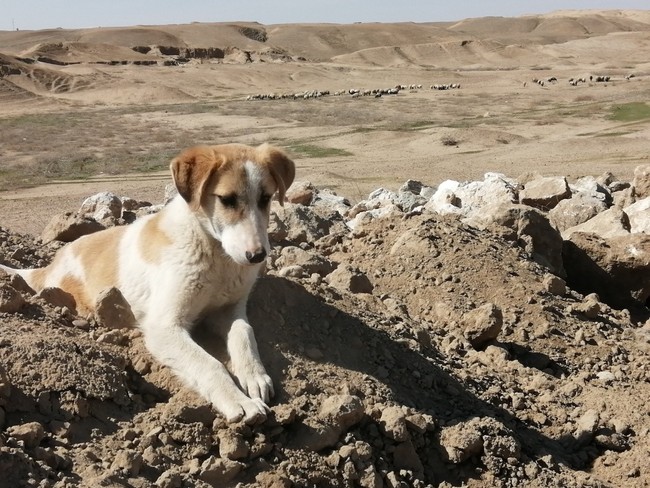The 2025 Excavation Campaign
Preliminary report on the excavations in the New Town of Assur
February/March 2025
The core team of the 2024 spring campaign was composed of Florian Janoscha Kreppner, Akam Omar Ahmed Al-Qaradaghi, Mark Altaweel, Eileen Eckmeier, Rafał Fetner, Helen Gries, Veronica Hinterhuber, Alessio Palmisano, Kamal Rasheed Raheem, Jana Richter, Jens Rohde, Andrea Squitieri und Poppy Tushingham (Fig.1).

Fig. 1: The team on the last day of the excavation campaign before their departure for Baghdad
This year's excavation focused on section NT1 (Fig. 2). There, we removed the Hellenistic building A documented in the previous year in order to explore the underlying layers from the late Neo-Assyrian period and to expose building B, which dates from this period, over a larger area. It became clear that the stratigraphy is more complex than it had appeared in the 2024 test section: parts of the late Neo-Assyrian Building B remained accessible even after the fall of the city of Assur in 614 and were reused over a long period of time. Subsequently, another building was constructed on the slope from the west, which reused parts of the ruins of Building B and overlaid other parts. We call this newly discovered structure Building C, and now have architectural remains from the Late Neo-Assyrian period (Building B), the post-Assyrian period, possibly under Achaemenid rule (Building C), and the Seleucid period (Building A). Radiocarbon dating will further refine this rough classification and provide a framework for the material analyses with which we are currently continuing to investigate the settlement traces of the various phases. The refinement of the stratigraphy in this campaign also made it possible to better classify the graves from this and previous excavation years and to now also process them in a diachronic comparison.

Fig. 2: Orthophoto of the southern part of Assur with Trench NT1.
NT1 2025 Phase 6b: Graves from the Hellenistic period
A total of five graves can now be linked to the period of use of Hellenistic Building A. Three of these graves were newly discovered in 2025 (Fig. 3). One of the graves contained a ceramic vessel with parallels in the Hellenistic Levant.

Fig. 3: Excavation of a tomb from the Hellenistic period, with the ovoid-elliptic sarcophagus covering the burial in the center.
NT1 2025 Phase 6a: Hellenistic Architecture
Building A
The Hellenistic Building A was carefully dismantled during this excavation campaign. This allowed for further observations to be made regarding the construction and furnishings of the Hellenistic silo, which was dug deep into older layers (Fig. 4).

Fig. 4: Jens Rohde and his team dismantle the cladding of the Hellenistic silo.
NT 1 2025 Phase 5b: Graves from the post-Assyrian period
Four newly discovered graves were located beneath the construction horizon of Building A and cut into the rubble layers of Building B. They therefore also belong to the post-Assyrian period.
NT1 2025 Phase 5a: Post-Assyrian architecture
Building C
Building C (Fig. 5) is a flat, single-room structure in which clay installations, finds, and plant remains from the well-preserved floor allow for studies of post-Assyrian use.

Fig. 5: A corner of building C from the post-Assyrian period, partly built over and partly against older architectural remains.
NT1 2023 Phase 4: Late Neo-Assyrian architecture
Building B
We have now uncovered approx. 260 m² of Building B (Fig. 6), which must have been significantly larger overall. The various rooms of the building were used for different lengths of time and therefore provide information about both the Late Neo-Assyrian period and the immediately following settlement phase of the New Town.

Fig. 6: Veronica Hinterhuber documents walls in Building B.

Fig. 7. Animal visitors at the excavation site.

